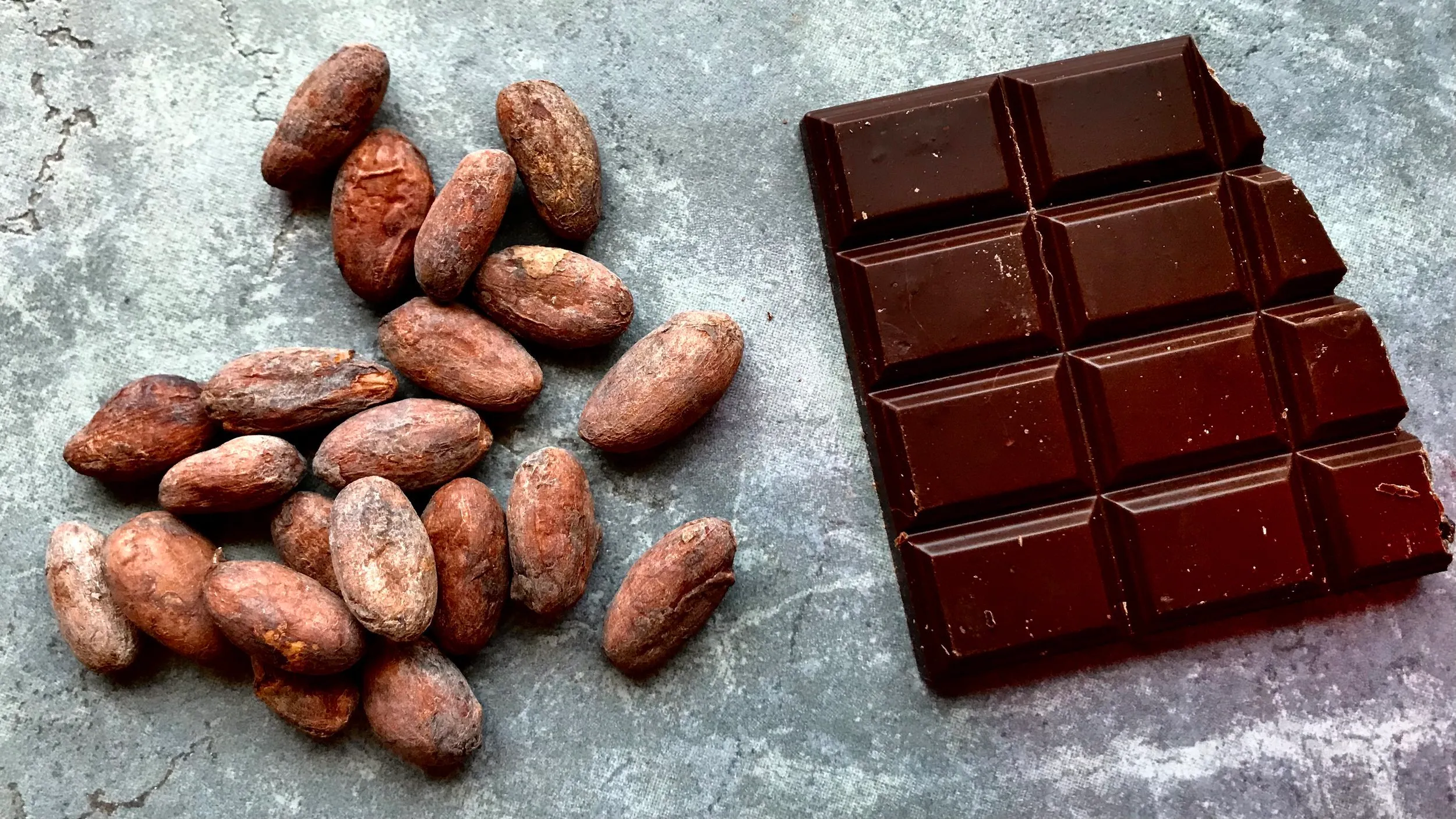Have you ever pondered, “How many cocoa beans does it take to make a pound of chocolate?” Delve into the captivating tale of chocolate’s genesis and witness the extraordinary transformation of humble cocoa beans into irresistible delights. Join us on a journey through the mesmerizing world of chocolate production, where we’ll uncover the intricate processes that turn these beans into our favorite indulgences.
How Many Cocoa Beans Are in a Pound of Chocolate?
Have you ever wondered how many of those delicious chocolate squares you’ve been indulging in come from actual cocoa beans? Well, brace yourself, because the answer might surprise you.
On average, a single pound of chocolate contains a whopping 400 cocoa beans. But hold your chocolate horses, there’s more to the story. The number of beans in a pound can vary depending on the type of chocolate you’re sinking your teeth into and the size of those cocoa beans.
Larger chocolate bars typically chew up more cocoa beans – a pound of dark chocolate can use anywhere from 300 to 600 beans. On the other hand, a 100-gram milk chocolate bar contains about 90 to 120 beans.
So, the next time you’re savoring that chocolatey goodness, remember the journey it took to bring joy to your taste buds – from about 400 cocoa beans to that divine treat in your hands.
Did you know that your favorite sweet treat, chocolate, has a lot of fascinating stories to tell? To find out more, check out our engaging article on fun facts about chocolate that will make you appreciate this delightful indulgence even more.
If you’re an avid chocolate lover, we strongly recommend you delve into the facts on chocolate and explore its rich history, health benefits, and intriguing cultural significance.
What is the process of harvesting cocoa beans?
Cocoa beans, the foundation of everyone’s favorite chocolate, go through a fascinating journey from tree to treat. Harvesting these beans is a labor of love, requiring keen eyes and a delicate touch. Here’s a step-by-step guide to this meticulous process:
Step 1: Spotting the Stars
Farmers become cocoa detectives, searching trees for plump pods that have ripened to a tempting yellow or reddish hue. These pods are the treasure chests hiding the precious cocoa beans.
Step 2: Releasing the Beans
Using sharp tools, the farmers carefully cut open the ripe pods, revealing the moist cocoa beans nestled inside. They work gently, ensuring they don’t harm the delicate beans.
Step 3: The Flavour-Booster
The beans embark on a flavor-enhancing adventure called fermentation. Tucked in wooden boxes or on nature’s bed of banana leaves, they undergo a magical process that brings out their rich flavors and aromas.
Step 4: Soaking Up the Sun
After their fermentation spa, the beans spread out in the warm embrace of the sun. They bask in its rays, drying out and preparing for the next adventure. Depending on the weather, this sunbathing session can last for several weeks.
Step 5: The Roast to Glory
The dried beans are ready for their ultimate transformation. They’re roasted to perfection, a process that unleashes the captivating flavors and aromas we all crave in chocolate.
Key Takeaways:
- Harvesting cocoa beans is a time-consuming, hands-on endeavor, requiring patience and expertise.
- From the moment they’re plucked from the tree to the final roasting, cocoa beans undergo a meticulous process to bring us the delight of chocolate.
Remember:
- It takes about 400 dried cocoa beans to produce a single pound of chocolate.
- Harvesting cocoa beans is a labor of love, showcasing the dedication of farmers who bring us this delicious treat.
How do the size and quality of cocoa beans affect the yield of chocolate?
When it comes to making chocolate, the size and quality of the cocoa beans you use matter a great deal. Let’s break it down:
Bigger beans are better: Larger cocoa beans have more juice, meaning they can produce more chocolate. It’s like when you pop a juicy grape, you get a bigger squirt of sweetness!
Quality counts: The best cocoa beans are ripe and have been patiently fermented and roasted. This nurturing process brings out the rich flavors and stunning textures that make chocolate so irresistible.
Think of it this way: using high-quality cocoa beans is like choosing premium ingredients for a gourmet meal. Just as fresh veggies make a better salad, quality beans make a more decadent chocolate.
And don’t forget, the environment plays a role. The climate and soil where cocoa beans are grown can influence their size and flavor. Just like wine grapes that thrive in specific regions, cocoa beans have their sweet spots too.
In short, when you’re after a chocolate experience that’s out of this world, pick the biggest, best cocoa beans you can find. They’ll reward you with a chocolatey symphony that will make your taste buds sing!
How does the fermentation process impact the flavor of chocolate?
Imagine this: you’ve just bitten into a rich, creamy piece of chocolate. As the chocolate melts in your mouth, you’ll experience a symphony of flavors and aromas dancing on your tongue. But did you know that the complex flavors of chocolate are not inherent to the cocoa bean? They’re the result of a culinary alchemy called fermentation.
Fermentation is a process where microorganisms like bacteria and yeast munch on the sugars in cocoa beans, transforming them into a symphony of flavors and aromas. This process is similar to how yogurt is made, and it’s a crucial step in chocolate-making, just like it is for other foods.
What does fermentation do for chocolate?
Fermentation is like a magical spell that works its wonders on cocoa beans. It breaks down the complex compounds in the beans, unleashing a burst of flavors and aromas that would otherwise remain hidden. The duration and temperature of fermentation play a big role in shaping the final flavor profile. Longer fermentation times create more intense flavors, while higher temperatures bring out fruity and floral notes.
How long does fermentation take?
Fermentation is a delicate dance between time and temperature. It typically takes 2 to 8 days at temperatures ranging from 40 to 55 degrees Celsius. During this time, the microorganisms have a feast, transforming the cocoa beans into a flavor powerhouse.
Different flavors, different fermentation
Just like different grape varieties produce different wines, different fermentation processes create different chocolate flavors. For example, spontaneous fermentation, where the beans are exposed to naturally occurring microorganisms, often results in complex and unpredictable flavors. Controlled fermentation, on the other hand, uses specific strains of bacteria and yeast to create more consistent flavors.
The magic of fermentation
Fermentation is the secret ingredient that turns ordinary cocoa beans into the delectable treat we all love. It’s a process that has been passed down through generations, and it continues to create the rich symphony of flavors that make chocolate so irresistible.
FAQ
Q1: How many cocoa beans are needed to make one pound of chocolate?
A1: Approximately 400 cocoa beans are required to produce one pound of chocolate. This number can vary based on the type of chocolate, cocoa bean variety, and recipe used.
Q2: How does the chocolate type affect the number of cocoa beans needed?
A2: Different types of chocolate have varying cocoa content, which impacts the number of beans required. For instance, dark chocolate with a higher cocoa percentage will necessitate more cocoa beans than milk chocolate.
Q3: What factors determine the variation in cocoa bean count?
A3: The size, moisture content, and quality of cocoa beans can affect the number required to produce a pound of chocolate. Larger, drier, and higher-quality beans may yield more chocolate, while smaller, more moist, and lower-quality beans may require a greater quantity.
Q4: How does the cocoa bean processing method influence the number of beans needed?
A4: The fermentation and roasting processes can impact the weight and flavor of cocoa beans, affecting the number needed to produce a pound of chocolate. Properly fermented and roasted beans tend to yield more chocolate than poorly processed beans.
Q5: What are some challenges associated with cocoa bean production?
A5: Harvesting cocoa beans from high tree branches can be difficult and time-consuming. Additionally, weather conditions and pests can affect the yield and quality of cocoa beans, potentially impacting the number needed to produce a pound of chocolate.
- Unlock Filipino Culture: A Deep Dive into Traditions and Practices - April 23, 2025
- Unlock Spanish Culture: Insights & Opportunities Now - April 23, 2025
- White Spirit Uses & Substitutes: A Deep Dive for Pros & DIYers - April 23, 2025
















